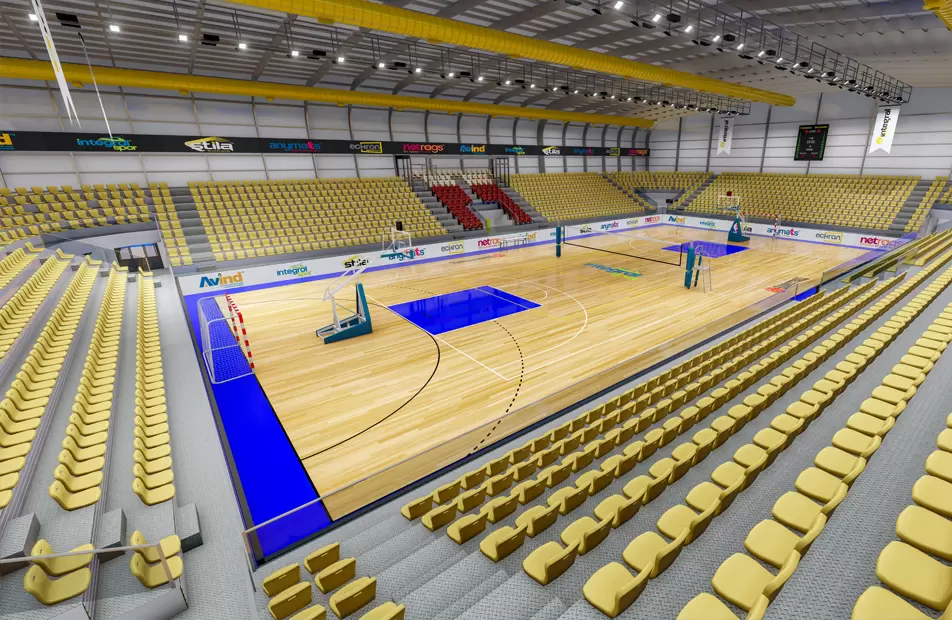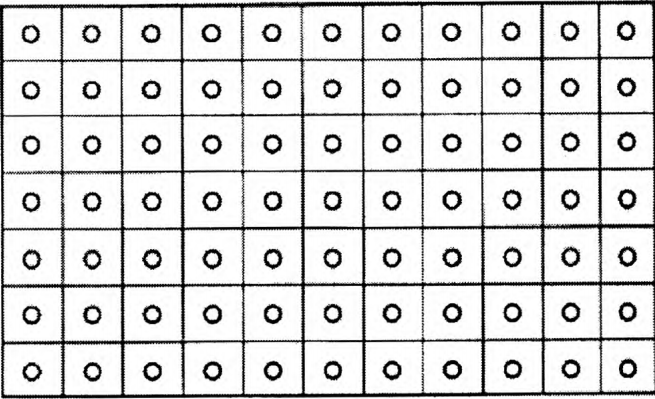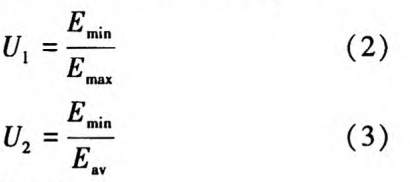Led Indoor Sports Lighting

Directory:
1. Sport Lighting Design Principles
2. Smart Indoor Sports Lighting Modes
3. Research on Indoor Sport Lighting
Smart lighting refers to a lighting control system that operates with a level of intelligence, allowing it to learn, predict trends, sense its environment, and make decisions autonomously. This technology continuously improves itself to adapt to changing lighting conditions. Unlike traditional lighting, smart lighting can automatically adjust the ambiance, enhance work and living spaces, optimize energy usage, improve power efficiency, extend the lifespan of light sources, and offer more reliable and convenient management. It integrates with the Internet of Things, paving the way for advanced lighting technology.
Currently, smart lighting systems are extensively utilized in various environments, including film and television stages, multimedia conference rooms, and eco-friendly smart buildings, yielding positive results. However, the focus on control systems in smart lighting means that its capabilities are still limited compared to what is possible. It struggles to provide precise and dynamic illumination tailored to different lighting scenarios. New gymnasiums and renovation projects demand higher standards for energy efficiency, environmental sustainability, and other technical features in lighting systems. Therefore, developing a safe, reliable, energy-efficient, and cost-effective intelligent lighting system that enhances the lighting quality in sports venues for training and competitions has become a key area of research for lighting professionals.
1. Sport Lighting Design Principles
1.1 Compliance with Specifications
When designing sport lighting, it is essential to adhere to the guidelines outlined in relevant specifications and CIE documents, while also considering practical usage requirements. Factors such as the type of sporting event, competition level, and economic benefits of the project must be taken into account. The design of the sport lighting system should cater to various sports events and different functional modes (training, competition, TV broadcasting, etc.), with illumination levels ranging from 300 to 2000 lux. The illuminance should be consistent and stable, typically maintaining a stability coefficient of 0.8. Additionally, the color temperature of the light source should be kept between 4000 and 6000 K. For venues not broadcasting in color, the color rendering index (Ra) must be at least 65; for color broadcasting venues, it should be 80 or higher; and for major international and domestic venues, the Ra should reach 90 or above.
1.2 Meeting Comfort Standards
The lighting in sports venues must not only adhere to technical specifications but also prioritize user comfort. It is essential to account for the standard lighting levels needed for athletes and referees during training, competitions, and judging, while also ensuring that glare levels are kept within acceptable limits. This is crucial to prevent athletes from being distracted by glare during events and to ensure that spectators do not miss key moments due to poor visibility. Furthermore, when designing an intelligent lighting system, it is important to establish appropriate and uniform illuminance levels and distribution, creating an ideal three-dimensional experience of light and color.
2. Smart Indoor Sports Lighting Modes
The smart indoor sport lighting system should gather various data, including the lighting curve of fixtures, LED power, lamp positioning, time, weather conditions, and participant information, as well as details about the gymnasium's appearance, facade, texture, color, and reflection. Given the large volume and variety of data, along with its rapid update rate, the design of smart lighting can be divided into different sub-modes. These include entertainment mode, amateur competition mode, and broadcast mode.
2.1 Smart Indoor Sports Lighting Entertainment Sub-Mode
Many indoor gymnasiums are designed to be accessible to the public, making the entertainment lighting mode the most prevalent smart lighting option. According to relevant standards, various ball games require a horizontal illumination level of 300lx in entertainment mode, with specific brightness requirements for the surrounding area:
1) There should be no glare that interferes with visual tasks;
2) The illumination of the surrounding area should complement the work surface illumination. In this mode, spectators may shift their focus between players, screens, and stands, leading to significant brightness differences between objects, which can cause visual fatigue for athletes. Table 1 provides the ambient illumination values that align with the work surface illumination.
Table 1 Illuminance values relative to the surrounding environment on the working surface

After creating the smart sport lighting system, when the entertainment sub-mode is activated, the illuminance on the athletes' working area must be at least 300 lux, while the horizontal illuminance in surrounding areas like the stands should be no less than 200 lux. Additionally, the uniformity of illuminance on the working surface must not fall below 0.3. and the surrounding environment should also maintain a minimum of 0.3.
2.2 Smart Indoor Sports Lighting for Amateur Competition Sub-Mode
When the gymnasium is set to the smart lighting amateur competition sub-mode, it is essential to not only fulfill the minimum illumination standards for the stadium but also to address the potential glare affecting athletes. Therefore, when this mode is activated, it must comply with the maximum glare value (GR) specified in the guidelines, and it should also define the shading angle in relation to the brightness of the light source (refer to Table 2).
Table 2 Minimum shading angle corresponding to the brightness of the light source

After creating the smart sport lighting system, when the amateur competition sub-mode is activated, the illuminance on the athletes' working area must be at least 500 lx, while the horizontal illuminance in surrounding areas like the stands should be no less than 300 lx. Additionally, the uniformity of illuminance on the working surface must be at least 0.6. and for the surrounding environment, it should be no less than 0.4. The light source's maximum shading angle must exceed 20°.
2.3 Smart Indoor Sport Lighting Broadcast Sub-Mode
When the gymnasium is set up for broadcasting, typically during professional competitions, the lighting requirements become more stringent. To ensure that the audience can clearly see the athletes' numbers and referees' gestures, both horizontal and vertical illuminance must meet higher standards. With the broadcast sub-mode activated, the illuminance on the athletes' working surface should be no less than 1000 lx, the horizontal illuminance in surrounding areas like the stands should be at least 500 lx, and the vertical illuminance must be a minimum of 750 lx. The uniformity of illuminance on the working surface should not fall below 0.8. while the surrounding environment should be at least 0.5. The light source's maximum shading angle must be greater than 30°.
3. Research on Indoor Sport Lighting
To gain insights into the current state of indoor sport lighting and to inform future smart lighting designs, the author conducted field research on the lighting in a middle school gymnasium.
3.1 Project Overview
The indoor gymnasium at a middle school spans an area of 1220m², with a height of 16 m and a square design. Stands are located on both sides of the gym, while skylights are positioned on the east and west sides of the court. The lighting consists of LED lamps, with a total of 63 lamps installed in the center of the gymnasium, along with 3 lamps on each side of the seating area, calculated as 7×9+3+3. The facility includes one basketball court and four badminton courts. The dimensions of the basketball court are 28.33 m by 22.13 m, and each badminton court measures 6.1 m by 13.4 m. The arrangement of the gymnasium lights is illustrated in Figure 1.
Figure 1 Sport lighting layout

3.2 Current Lighting Conditions in the Stadium
Various factors influence the lighting conditions in indoor stadiums. This study evaluates the horizontal illuminance, vertical illuminance, and uniformity of illuminance on the basketball and badminton courts based on real conditions.
To assess the illuminance, the first step is to establish a method for point distribution. Given the relatively even arrangement of lights in the stadium, this study employs a center point distribution method that is efficient with fewer points, though it may sacrifice some accuracy. After identifying the area for lighting measurement, it can be organized into a rectangular grid. The grid should be square, with measurement points positioned at the center of each grid square, as illustrated in Figures 2 and 3. This distribution method is applicable for measuring horizontal illuminance, vertical illuminance, or vertical illuminance in the direction of the camera, with vertical illuminance reflecting the normal direction of the surface being measured.
Figure 2 Schematic diagram of the center point method

3.3 Test Results
In accordance with the specifications, the testing team segmented the basketball court into 2m×2m squares, positioned a measuring point at the center of each square, adjusted the tripod to a height of 1.5m, and placed it on the measuring point (refer to Figure 4). They then measured both horizontal and vertical illuminance. For vertical illuminance, measurements were taken in four different directions, and the average value was calculated. The center point method for illuminance measurement can be computed using formula (1).That is,
![]()
Where: E—— average illuminance, in lux (lx);
E,—— illuminance at each measuring point, in lux (lx); M—— number of longitudinal measuring points;
N—— number of transverse measuring points.
Testing results indicate that the optimal horizontal illuminance on the basketball court is 233 lx, while the average vertical illuminance measures 85.8 lx. At the least illuminated point, the horizontal illuminance is 105 lx, and the average vertical illuminance is 53 lx. Overall, the average horizontal illuminance is 177.2 lx, and the average vertical illuminance is 76.5 lx. In terms of illumination uniformity, the ratio of the minimum to maximum illumination on the surface is denoted as U₁, and the ratio of the minimum to average illumination is represented as U₂.That is,

Where: U₁, U₂——illuminance uniformity;
E——minimum illumination value on the specified surface;
Em——maximum illumination value on the specified surface;
E——average illumination value on the specified surface.
After calculation
![]()
3.4 Conclusion and Recommendations
The findings from the survey and testing, in conjunction with the Sports Lighting Design and Testing Standards, indicate that the indoor gymnasium at the middle school is intended for training and recreational activities. Therefore, the average horizontal illuminance should be at least 300 lux, and the illuminance uniformity (U₂) should not fall below 0.3. The current lighting levels in the gymnasium do not meet these standards. To retrofit the gymnasium to a smart lighting system, the following suggestions can be implemented:
1) Install sensors that automatically adjust the brightness and illuminance in the occupied areas of the gym when only part of the space is in use, while reducing the brightness in the unoccupied areas.
2) Increase the wattage of individual lamps.
3) Establish smart sub-modes for the indoor sports lighting environment, which can include four distinct lighting modes: morning training, bright daylight training, evening training, and night training.
4) Optimize the use of scattered light from the lighting fixtures in the gymnasium, taking into account the internal architectural design.
The evolution of smart cities from digital cities represents a significant advancement in the global scientific and technological revolution following the information age. The integration of smart technology in the construction and renovation of indoor sports facilities is becoming essential in promoting national fitness initiatives. By leveraging the Internet, sensor networks, and LED lighting, along with data mining algorithms and fuzzy mathematical models, we can develop intelligent lighting systems for indoor gymnasiums. This approach will enhance the visual environment, align with energy-saving and eco-friendly lighting practices, and ultimately facilitate dynamic lighting that meets specific needs.
4. Related Product
